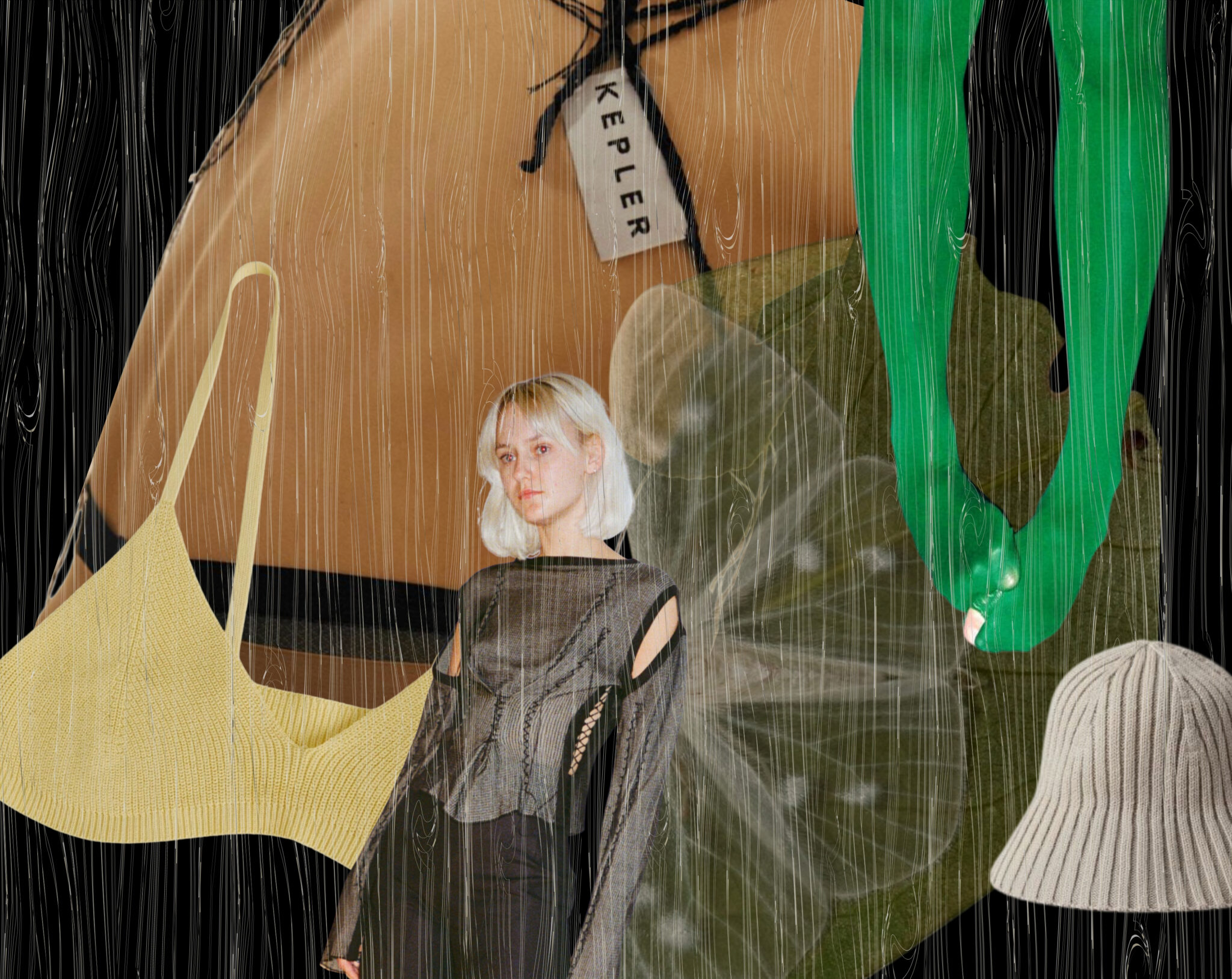GRAPHIC DESIGN Aisling Gogan
If I close my eyes and think of my grandmother, there are a few settings I imagine. I think of her standing in the kitchen where she’s cooked the meals for nearly every holiday of my life, or sitting in the sun at her cottage. Often, I think of her knitting, and can hear the sounds of her needles clicking together with each stitch. My grandmother is the one who taught me how to knit when I was young; I had chunky needles and multi-coloured yarn, and I exclusively knit scarves that were just a bit too short.
Knitwear has been a constant in the fashion cycle, coming back into trend year after year when the temperature starts to drop. The rise of slow fashion, combined with the increased focus on comfort, created a space for knitwear to thrive; The need for a therapeutic lockdown activity created an ideal environment for knitting to flourish. Even Bernie Sanders jumped on the knitwear trend, showing up to the Presidential Inauguration in January with a pair of knitted mittens that took the internet by storm.
Knitwear’s characteristics suggest an embrace and warmth associated with human touch, which we are left longing for in the age of social distancing. Over the past year, we’ve spent our days in an increasingly digital reality, and the intimate process of knitting has given many a reason to disassociate with this often overwhelming digital space. It has become a sort of love language between the creator and the wearer, be it themselves, friends, family, or the community.
I had the pleasure of speaking with the owners of two Toronto-based knitwear brands that got their start over the past year.
I first spoke with Claudia Wilde of Wilde Knits, who started selling her hand-knit sweaters in September 2020.
You focus on ethical production for your sweaters, which I love! I’m wondering what the process was like for sourcing your wool and dyes?
C: Something that re-kindled my interest in knitting was the ability to better monitor the supply chain. I work with 100% biodegradable, natural fibres in order to avoid microplastics and try to source wool that is mulesing-free. The needles I use are wood. All of the yarn is coloured with OEKO-TEX and REACH certified dyes, which guarantees that the dyes are free from numerous harmful chemicals, even if they aren’t regulated, as well as numerous environmentally relevant substance classes.
C: I’m hoping to work with more local Canadian yarn mills in the future and experiment with foraged dyes and recycled fibres, too!
What do you like most about knitting?
C: I love the creative freedom it provides! When I was transitioning to a more sustainable wardrobe, I limited myself to purchasing mostly second-hand, which was great sometimes, but there’s an ironic-cool Y2K style associated with vintage and thrifted clothing that I find doesn’t always suit my personality. Knitting has allowed me to make the pieces I want to wear but can’t always find in thrift stores.
C: Also, as someone who has struggled with their mental health through university, learning to knit has provided a gentleness and childish tactility that can easily be woven into the corners of my day. Making sweaters has the ability to gently ground us in our senses and connect us to one another in a loving and intentional way. In a capitalist culture, knitting makes space for slow, intentional movement that not only benefits the knitter, but also those around her.
What’s your favourite piece that you’ve made?
C: My pink Lake Ontario sweater that I just finished for a client in Vancouver. I made the whole piece in the round, there are hardly any seams, and the colours are just dreamy. I keep saying this, but I’m hoping to publish a pattern for that sweater soon!
I also spoke with co-owners Petra Calder and Kelly Schaefer of Amarilla Wool, which got its start in January 2021.
How do you go about your work, and how do you separate the work between the two of you?
K: We work through everything together, our projects always come out smoother when we can bounce ideas off each other. We’ll sit in a park or on Petra’s carpet and spend hours making plans for projects, whether that’s winding yarn, designing graphics, learning new stitches or contacting customers, we do it all together.
K: When it comes to dividing the handiwork we honestly just split the projects between what we know we can handle and between who we know can create something quickly. If one of us has a test or shift at work then we’ll just balance out the work to match when we have time.
What’s your favourite piece that you’ve made?
K: Definitely the sweet-pea sweater I made for Petra. I was so happy with the final product because it was the largest piece I have ever made, as well as my first time working with large scale needles and merino wool. I worked alongside Petra to make the overall design of the sweater, which sparked our creative connection. In the end, it was a gift from me to her, which is the most rewarding part of knitting by far.
P: A two-tone green checkered bucket hat. It was the second thing I ever made and it is absolutely atrocious. It’s too small, the checkers are uneven, the inside is covered in stray strings and it used up way too much yarn. Since it doesn’t fit anybody I now use it as a plant pot, and as a reminder of my progress and where Amarilla started.
Do you have any tips for anyone looking to start knitting?
P: Start with easy designs and work your way up.
K: Be patient. It is a difficult skill that takes both time and practice.


























